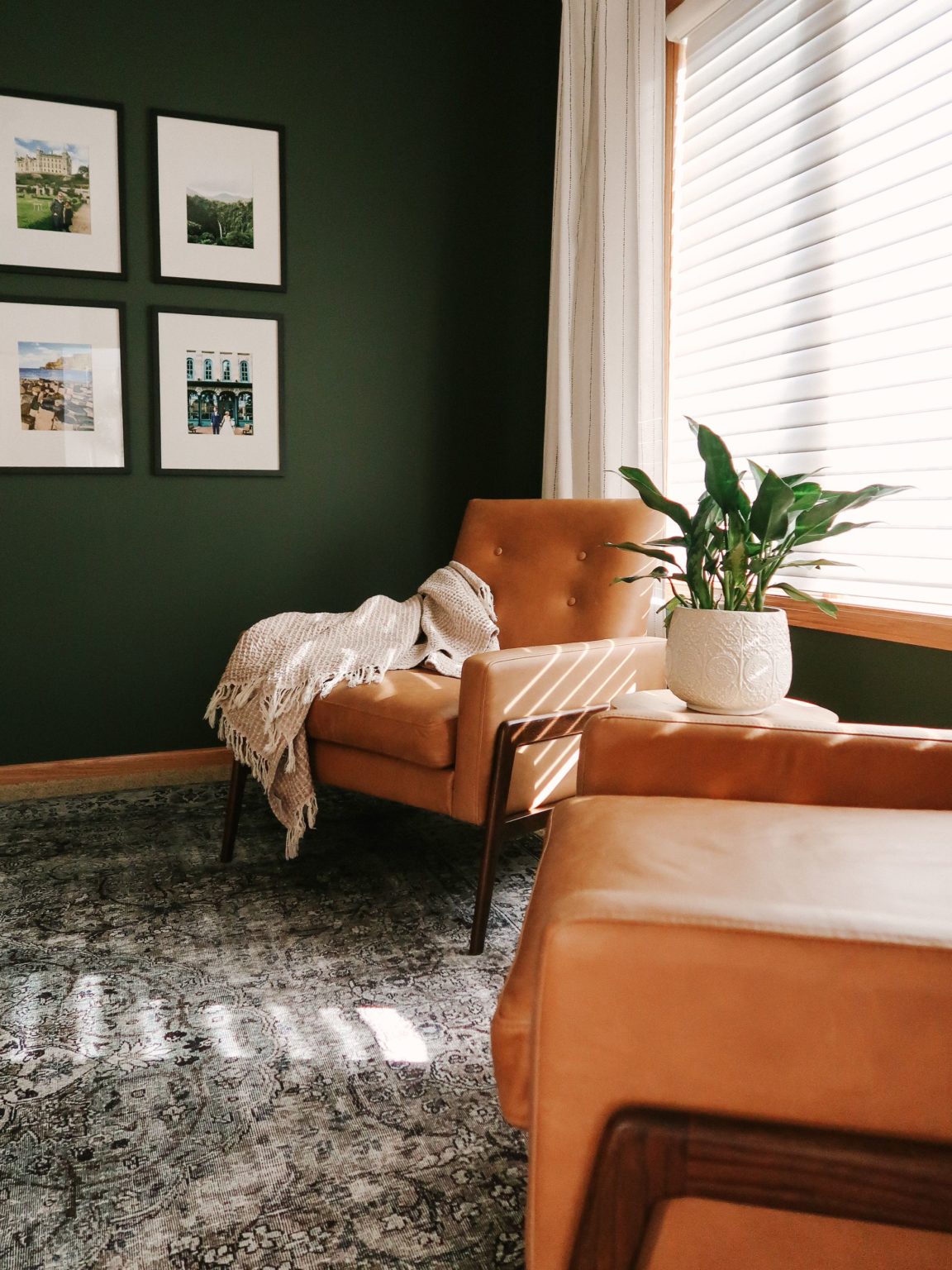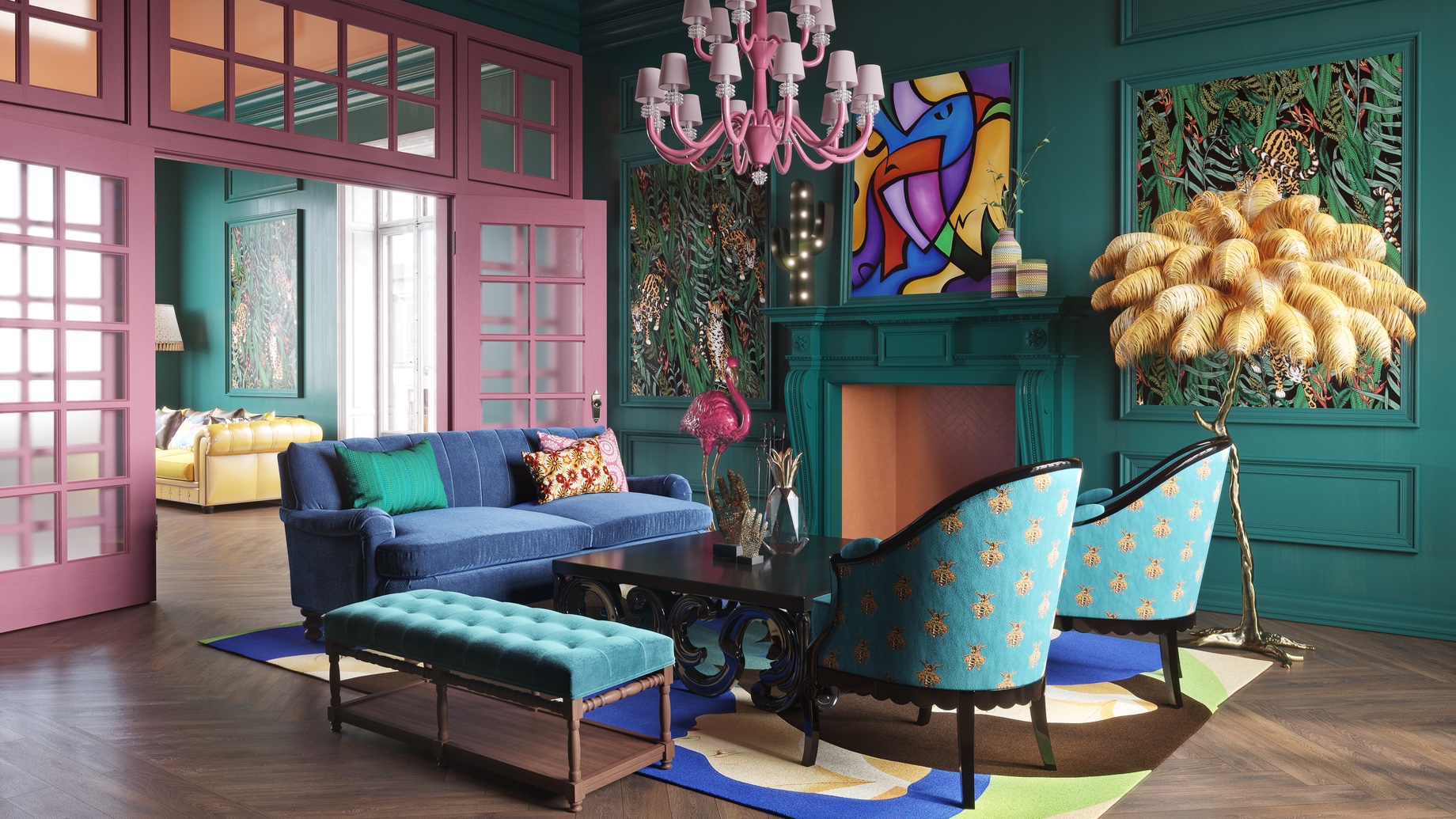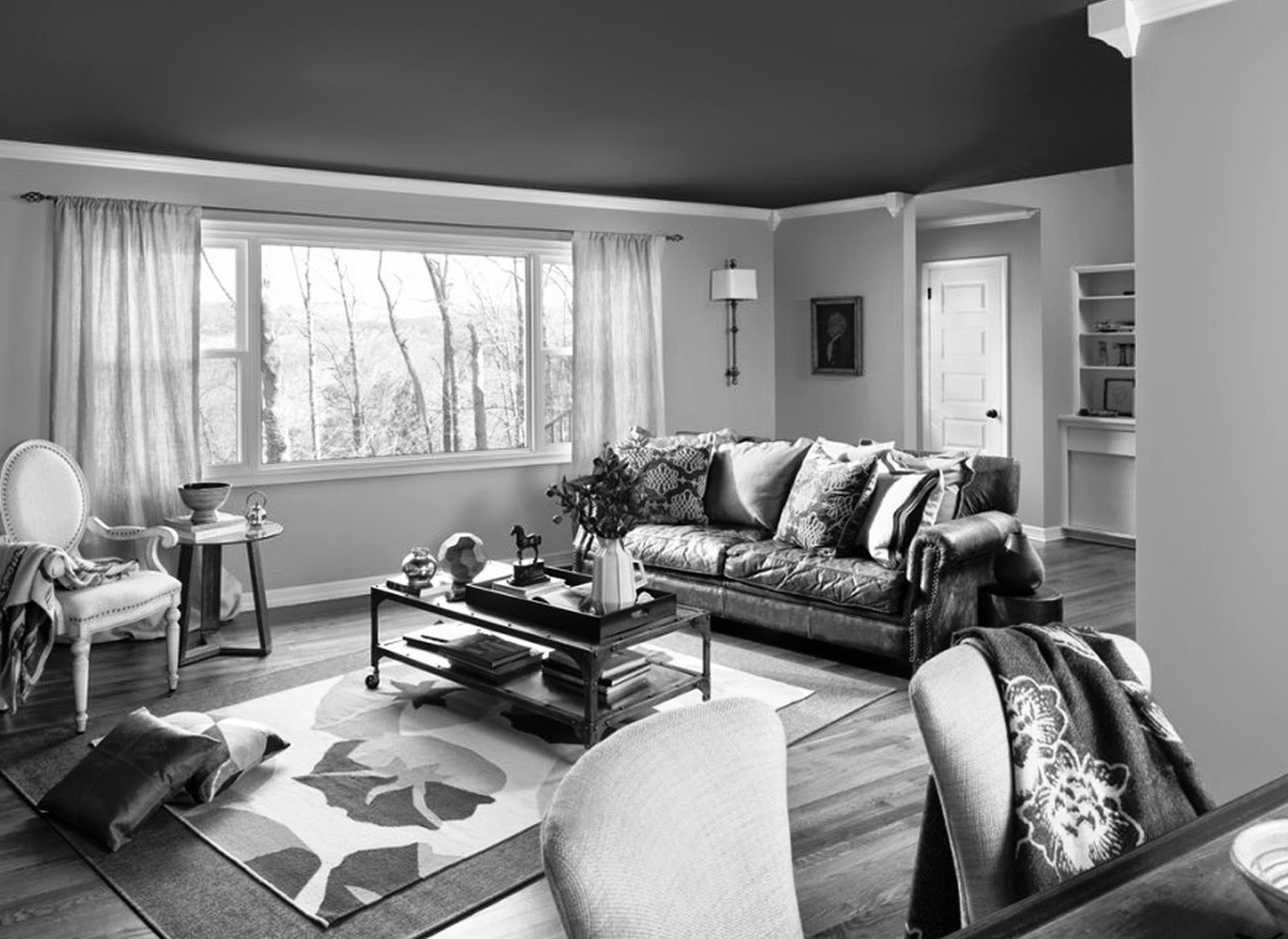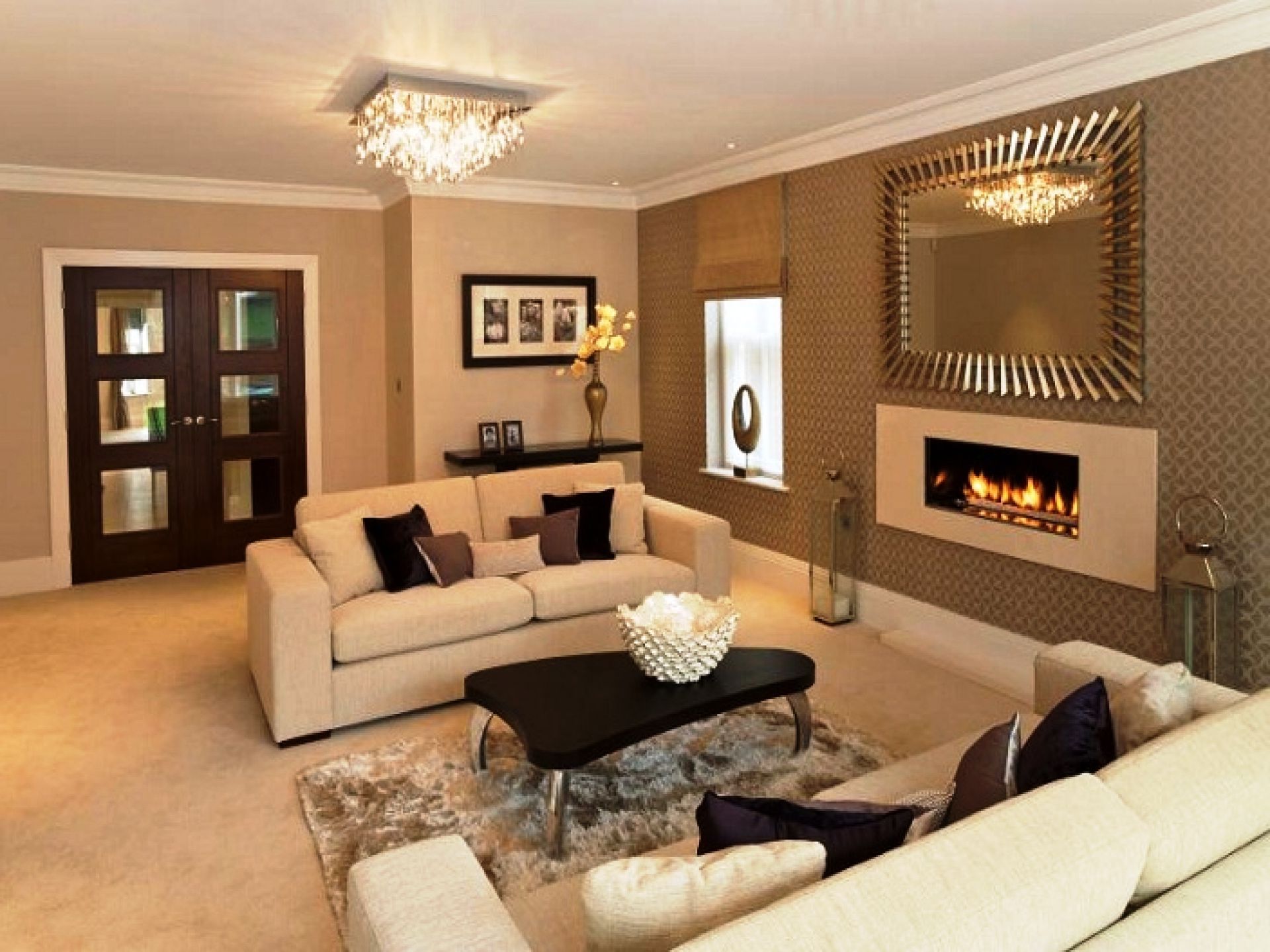1. Choosing the Right Contrast Paint for Your Living Room
When it comes to giving your living room a fresh new look, one of the easiest and most impactful ways to do so is by using contrast paint. This technique involves using two different colors or shades to create a bold and dynamic look that can completely transform the feel of your space. However, with so many options available, it can be overwhelming to choose the right contrast paint for your living room. Here are some tips to help you make the best choice.
First, consider the overall theme and style of your living room. Is it modern and sleek or more traditional and cozy? This will help guide you towards the right color palette. For a modern look, consider using a high-contrast combination such as black and white or navy and white. For a more traditional feel, opt for warm and inviting colors like burgundy and cream or forest green and beige.
Next, think about the natural lighting in your living room. If you have large windows that let in a lot of natural light, you may want to choose colors that are slightly darker to create a more balanced and cozy feel. On the other hand, if your living room is on the smaller side or doesn't have much natural light, lighter and brighter contrast colors can help make the space appear larger and more inviting.
Lastly, don't be afraid to get creative and take risks with your contrast paint choices. While it's important to consider the overall style and lighting of your living room, don't be limited by traditional color combinations. Experiment with bold and unexpected contrasts, such as deep plum and mustard yellow or emerald green and peach. These unique combinations can add a touch of personality and character to your living room.
2. How to Use Contrast Paint to Transform Your Living Room
Once you've chosen the perfect contrast paint for your living room, it's time to start transforming your space. Here are some tips to help you use contrast paint effectively and create a stunning new look for your living room.
First and foremost, always start with a clean and prepped surface. This means wiping down your walls to remove any dust or debris and taping off any areas that you don't want to get paint on. This will ensure a smooth and clean finish for your contrast paint.
Next, decide which areas of your living room you want to paint with the contrast colors. Usually, it's best to choose larger walls or focal points, such as the wall behind your couch or the area above your fireplace. This will give your living room a cohesive and intentional look.
When painting, be sure to use a high-quality brush or roller to ensure smooth and even coverage. If you're using two different colors, paint one color first and let it dry completely before moving on to the second color. This will help prevent any bleeding or smudging of the colors.
Lastly, don't be afraid to add some finishing touches to really make the contrast paint pop. You can add wall decals, stencils, or even hand-painted designs to your contrast walls to add some extra visual interest and personality to your living room.
3. The Best Color Combinations for Contrast Paint in Your Living Room
As mentioned before, there are endless possibilities when it comes to choosing contrast paint colors for your living room. However, some combinations are tried and true and always create a stunning and impactful look. Here are some of the best color combinations to consider for your living room.
Black and white is a classic and timeless contrast combination that works well in any living room. The stark contrast between these two colors creates a bold and sophisticated look that can elevate any space. Another popular combination is navy and white, which has a similar effect but with a slightly softer and more nautical feel.
If you're looking for something a little more daring, consider pairing deep jewel tones like emerald green, sapphire blue, or amethyst purple with lighter and brighter shades like peach, mustard yellow, or blush pink. This combination creates a beautiful balance of dark and light and adds a touch of luxury and elegance to your living room.
Lastly, for a more cozy and inviting feel, consider using warm and earthy tones like terracotta and cream, or forest green and beige. These combinations have a natural and soothing feel that can make your living room feel like a relaxing retreat.
4. Tips for Painting Your Living Room with Contrast Colors
Painting with contrast colors can be a bit more challenging than using a single color, but with the right techniques, you can achieve a professional and polished look. Here are some tips to help you paint your living room with contrast colors like a pro.
First, make sure you have all the necessary supplies and tools before starting. This includes high-quality brushes and rollers, painter's tape, drop cloths, and a small paint tray. Having everything you need on hand will make the process smoother and prevent any interruptions or delays.
Next, be patient and take your time. Using contrast paint requires more precision and attention to detail, so rushing through the process can lead to mistakes and uneven coverage. Take breaks if needed and remember to let each color dry completely before moving on to the next.
Lastly, don't be afraid to ask for help. Painting a living room with contrast colors can be a big job, so don't hesitate to enlist the help of friends or family members. This will not only make the task go faster but also ensure a more professional and polished end result.
5. Creating a Bold and Beautiful Living Room with Contrast Paint
The beauty of contrast paint is its ability to completely transform a space and create a statement look. If you want to make a bold and beautiful statement in your living room, contrast paint is the way to go. Here are some ideas to help you achieve a bold and beautiful living room with contrast paint.
Consider using a high-contrast color combination like black and white, navy and white, or emerald green and peach. These combinations will instantly catch the eye and create a striking and dramatic look in your living room.
Another way to create a bold contrast look is by using a dark color on one wall and a light color on the opposite wall. This creates a high-impact contrast that can make your living room feel larger and more dynamic.
Lastly, don't be afraid to mix and match textures and patterns in your living room with your contrast paint. For example, if you have a navy and white contrast wall, add in some navy and white patterned pillows or a textured navy rug to tie the look together and add depth and dimension to your space.
6. Using Contrast Paint to Add Depth and Dimension to Your Living Room
One of the great benefits of using contrast paint in your living room is its ability to add depth and dimension to your space. This is especially useful if you have an open-concept living room or a smaller space that needs some visual interest. Here are some tips for using contrast paint to add depth and dimension to your living room.
First, consider using a darker contrast color on a focal wall or in a specific area of your living room. This will create a visual focal point and make the space feel more dynamic and layered. You can also use a lighter contrast color on the surrounding walls to create a sense of depth and contrast.
Next, consider using different shades of the same color for your contrast paint. For example, if you have a light grey wall, use a darker shade of grey for your contrast color. This creates a subtle contrast that adds depth and dimension without being overly bold or dramatic.
Lastly, consider using different finishes for your contrast paint. For example, if you have a matte finish on your main wall, use a glossy finish for your contrast color. This will add another layer of dimension and make the contrast colors stand out even more.
7. The Dos and Don'ts of Using Contrast Paint in Your Living Room
While contrast paint can be a fun and effective way to transform your living room, there are some dos and don'ts to keep in mind to ensure a successful and cohesive look. Here are some of the most important things to consider when using contrast paint in your living room.
Do choose colors that complement each other. While contrast colors should be different, they should also work well together and create a cohesive look. Stick to a color palette or theme to ensure a harmonious contrast look.
Don't forget to prep your walls. As mentioned before, it's important to clean and prep your walls before painting to ensure a smooth and even finish. This will also prevent any mistakes or smudges that can occur if there is dust or debris on the walls.
Do experiment with different color combinations. Don't be afraid to try something new and unexpected with your contrast paint. This is a great opportunity to add some personality and character to your living room.
Don't use too many contrast colors. While it can be tempting to use more than two contrast colors, it's best to stick to two to three colors for a cohesive and polished look. Using too many colors can create a chaotic and overwhelming feel in your living room.
8. Choosing the Perfect Furniture to Complement Your Contrast Painted Living Room
Once you've painted your living room with contrast colors, it's important to choose furniture and decor that will complement and enhance the new look. Here are some tips for choosing the perfect furniture for your contrast painted living room.
First, consider the color and style of your contrast paint. If you have a bold and high-contrast color combination, opt for neutral and understated furniture to balance out the space. If your contrast colors are more subtle, you can be more daring with your furniture choices.
Next, think about the overall style of your living room. If you have a modern and sleek contrast look, choose furniture with clean lines and minimalistic design. For a more traditional contrast look, opt for furniture with ornate details and classic shapes.
Lastly, don't be afraid to mix and match different styles and colors in your furniture. This can add some visual interest and create a unique and personal feel in your living room. Just make sure that the furniture still complements and doesn't clash with your contrast paint colors.
9. How to Incorporate Contrast Paint into Your Living Room Design
If you're planning to incorporate contrast paint into your living room design, it's important to have a cohesive plan for how the contrast colors will work with the rest of your space. Here are some tips for incorporating contrast paint into your living room design.
First, consider the flow and layout of your living room. Make sure that the contrast colors are used strategically and don't disrupt the flow of the space. For example, if you have an open-concept living room, use contrast colors in specific areas to create a sense of separation and definition.
Next, think about the other elements in your living room, such as flooring, curtains, and decor. Make sure that these elements complement and enhance the contrast paint rather than clash with it. For example, if you have a bold contrast wall, choose neutral curtains and a simple rug to balance out the space.
Lastly, don't be afraid to add some personal touches and accents to your contrast painted living room. Incorporate some artwork, pillows, or other decor items that tie in with the contrast colors and add some character and personality to your space.
10. The Impact of Contrast Paint on the Mood of Your Living Room
Last but not least, it's important to consider the impact that contrast paint can have on the overall mood and atmosphere of your living room. Different color combinations can evoke different emotions and set the tone for your space. Here are some examples of how contrast paint can impact the mood of your living room.
For a modern and sophisticated feel, consider using high-contrast combinations like black and white, or navy and white. These combinations can create a sense of elegance and sophistication in your living room.
To add a touch of warmth and coziness, opt for contrast colors in warm and earthy tones like burnt orange and cream, or forest green and beige. These combinations have a natural and soothing feel that can make your living room feel like a cozy retreat.
If you want to create a high-energy and dynamic space, consider using bright and bold contrast colors like hot pink and lime green, or electric blue and sunshine yellow. These combinations can add a sense of playfulness and excitement to your living room.
How to Make Your Living Room Pop with Contrast Paint

Transform Your Living Room with a Bold and Creative Color Scheme
 When it comes to designing your living room, one of the most important elements to consider is the color scheme. Whether you prefer a cozy and inviting feel or a more vibrant and energetic atmosphere, the right paint colors can make all the difference. In recent years, contrast painting has become a popular trend in home design, offering a unique and eye-catching way to add character to any room. By using bold and contrasting colors, you can create a stunning and dynamic living room that will leave a lasting impression on anyone who enters.
What is Contrast Painting?
Contrast painting involves using two or more colors that are on opposite ends of the color spectrum. This could mean pairing a warm tone with a cool tone, a light shade with a dark shade, or even two bright and bold colors that complement each other. The purpose of contrast painting is to create a visual impact and add depth to a room, making it look more vibrant and interesting.
Why Choose Contrast Paint for Your Living Room?
Using contrast paint in your living room can completely transform the space. It adds a sense of drama and personality to the room, making it stand out and feel more dynamic. Whether you have a small or large living room, contrast painting can make it look and feel bigger by creating an illusion of depth. It also allows you to experiment with different color combinations and add a modern touch to your home.
Tips for Choosing the Right Colors
When it comes to choosing the right colors for your living room, there are a few things to keep in mind. First, consider the existing elements in the room, such as furniture, curtains, and decor. You want to choose colors that will complement these elements rather than clash with them. Secondly, think about the mood and atmosphere you want to create. If you want a cozy and inviting living room, opt for warm and earthy tones. For a more energetic and vibrant space, go for brighter and bolder colors.
How to Incorporate Contrast Paint into Your Living Room
There are several ways to incorporate contrast paint into your living room design. One popular method is to use contrasting colors on opposite walls, creating a dramatic and impactful look. You can also use contrasting colors on a feature wall or in a specific area of the room, such as the fireplace or built-in shelves. Another option is to use contrasting colors in your furniture and decor, such as a bold-colored couch against a neutral wall or a vibrant rug on a dark floor.
In conclusion, contrast paint is a fantastic way to add character, depth, and personality to your living room. By choosing the right colors and incorporating them effectively, you can create a space that is visually appealing and reflects your personal style. So why settle for a plain and boring living room when you can make it pop with contrast paint? Try it out and see the difference it can make in your home.
When it comes to designing your living room, one of the most important elements to consider is the color scheme. Whether you prefer a cozy and inviting feel or a more vibrant and energetic atmosphere, the right paint colors can make all the difference. In recent years, contrast painting has become a popular trend in home design, offering a unique and eye-catching way to add character to any room. By using bold and contrasting colors, you can create a stunning and dynamic living room that will leave a lasting impression on anyone who enters.
What is Contrast Painting?
Contrast painting involves using two or more colors that are on opposite ends of the color spectrum. This could mean pairing a warm tone with a cool tone, a light shade with a dark shade, or even two bright and bold colors that complement each other. The purpose of contrast painting is to create a visual impact and add depth to a room, making it look more vibrant and interesting.
Why Choose Contrast Paint for Your Living Room?
Using contrast paint in your living room can completely transform the space. It adds a sense of drama and personality to the room, making it stand out and feel more dynamic. Whether you have a small or large living room, contrast painting can make it look and feel bigger by creating an illusion of depth. It also allows you to experiment with different color combinations and add a modern touch to your home.
Tips for Choosing the Right Colors
When it comes to choosing the right colors for your living room, there are a few things to keep in mind. First, consider the existing elements in the room, such as furniture, curtains, and decor. You want to choose colors that will complement these elements rather than clash with them. Secondly, think about the mood and atmosphere you want to create. If you want a cozy and inviting living room, opt for warm and earthy tones. For a more energetic and vibrant space, go for brighter and bolder colors.
How to Incorporate Contrast Paint into Your Living Room
There are several ways to incorporate contrast paint into your living room design. One popular method is to use contrasting colors on opposite walls, creating a dramatic and impactful look. You can also use contrasting colors on a feature wall or in a specific area of the room, such as the fireplace or built-in shelves. Another option is to use contrasting colors in your furniture and decor, such as a bold-colored couch against a neutral wall or a vibrant rug on a dark floor.
In conclusion, contrast paint is a fantastic way to add character, depth, and personality to your living room. By choosing the right colors and incorporating them effectively, you can create a space that is visually appealing and reflects your personal style. So why settle for a plain and boring living room when you can make it pop with contrast paint? Try it out and see the difference it can make in your home.



:extract_focal()/https://pocket-syndicated-images.s3.amazonaws.com/articles/5304/1596722483_at_housetours_2019-06_VivY-RhiannonSouthwell_AT_rhiannon_vivyapp-12.jpg)






























































/living-room-with-orange-wall-640896866-5ab15995a18d9e0037c3a9ba.jpg)






























